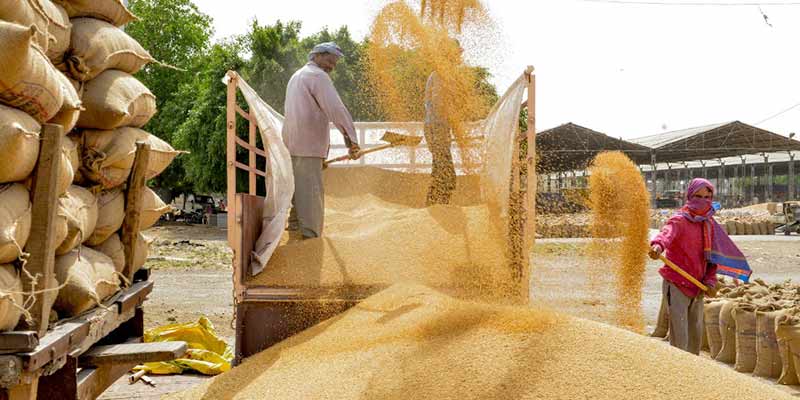- India
- Mar 28
Explainer / Biofortification of crops
Scientists from Agharkar Research Institute (ARI) in Pune have developed a biofortified durum wheat variety — MACS 4028 — which shows high protein content.
ARI, Pune is an autonomous institute under the department of science and technology.
The new variety matures in 102 days and has shown the superior and stable yielding ability of 19.3 quintals per hectare. It is resistant to stem rust, leaf rust, foliar aphids, root aphids, and brown wheat mite.
According to the report published in the Indian Journal of Genetics and Plant Breeding, MACS 4028 has high protein content of about 14.7 per cent, better nutritional quality having zinc 40.3 ppm, and iron content of 40.3ppm and 46.1ppm respectively, good milling quality and overall acceptability.
MACS 4028 is included by the Krishi Vigyan Kendra (KVK) programme for United Nations Children’s Fund (UNICEF) to alleviate malnutrition in a sustainable way and can boost the Vision 2022: “Kuposhan Mukt Bharat”, the National Nutrition Strategy.
Biofortification of staple crops
Fortification is the practice of deliberately increasing the content of an essential micronutrient — vitamins and minerals (including trace elements) — in a food, so as to improve the nutritional quality of the food supply and provide a public health benefit with minimal risk to health.
Biofortification is the process by which the nutritional quality of food crops is improved through agronomic practices, conventional plant breeding, or modern biotechnology.
Biofortification differs from conventional fortification. Biofortification aims to increase nutrient levels in crops during plant growth rather than through manual means during processing of the crops.
Biofortification may therefore present a way to reach populations where supplementation and conventional fortification activities may be difficult to implement or limited.
Examples of biofortification include:
*Iron-biofortification of rice, beans, sweet potato, cassava and legumes.
*Zinc-biofortification of wheat, rice, beans, sweet potato and maize.
*Provitamin A carotenoid-biofortification of sweet potato, maize and cassava.
*Amino acid and protein-biofortification of sorghum and cassava.
Significance of Biofortification
Biofortification, the process of breeding nutrients into food crops, provides a comparatively cost-effective, sustainable, and long-term means of delivering more micronutrients.
This approach not only will lower the number of severely malnourished people who require treatment by complementary interventions, but also will help them maintain improved nutritional status.
Climate change is reducing the nutritional quality of food and biofortification has the potential to address this challenge.
The Food and Agricultural Organisation (FAO) is working with the World Health Organisation on joint guidelines on biofortification.
Despite the evidence of its effectiveness, biofortification has not yet been fully mainstreamed.
What is Kuposhan Mukt Bharat scheme?
An endeavor to tackle the hidden hunger in the rural areas of India is being continued using traditional plant breeding approach to achieve “Kuposhan Mukt Bharat”.
The National Nutrition Strategy (NNS) is committed to ensuring that every child, adolescent girl and woman attains optimal nutritional status, especially those from the most vulnerable communities.
The focus is on preventing and reducing undernutrition across the life cycle as early as possible, especially in the first three years of life.
This commitment also builds on the recognition that the first few years of life are forever the foundation for ensuring optimum physical growth, development, cognition and cumulative lifelong learning.
Vision 2022: “Kuposhan Mukt Bharat” is part of the NNS published by the NITI Aayog in 2017.
The NNS framework envisages Kuposhan Mukt Bharat, linked to Swachh Bharat and Swasth Bharat.
The NNS mission will mobilise states to enable them to take up state/district action plans for becoming “kuposhan mukt” (free from malnutrition).
Manorama Yearbook app is now available on Google Play Store and iOS App Store

